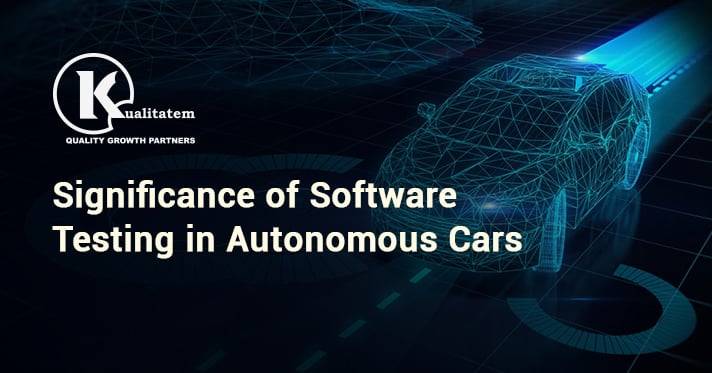Significance of Software Testing in Autonomous Cars

- February 20, 2020
- HibaSulaiman
Human civilization witnessed history in the 1800s when animal-driven carriages were replaced by carriages that no longer needed animals. Similarly, today we’re on the brink of another revolution which will see cars that require no manual intervention. In simple words, driverless cars. Industry giants such as Tesla, Google, and Uber are testing their autonomous driving technology and plan to roll them out in the near future.
But this isn’t something that we haven’t seen before. We’ve seen implement this concept on its cars that were commercially made available last year. Elon Musk, CEO of Tesla, was lauded for his ambitious efforts and achievement of this incredible milestone. But the world soon came to the conclusion that these cars were not ready for the real world when reports of fatal accidents involving autonomous cars emerged.
Public Perceptions and Real Issues
Surveys reveal that there is a huge trust deficit among the general public regarding autonomous vehicles. According to one of the surveys, 27% of the U.S adults consider autonomous vehicles ‘very unsafe’, 33% consider them ‘somewhat safe’ while only 8% think that they are ‘very safe’.
Experts believe that companies were so ambitious and optimistic that they failed to consider numerous real-life variables/factors which led to road accidents and public mistrust consequently. Turned out that it was much more than just throwing sensors and artificial intelligence. The real challenge was to build robust software that could drive these sensors and AI technologies, collate the data, imitate actions of a professional car driver according to the situation, and make quick decisions in real-time.
But even if the car is equipped with all the required technology, what’s the guarantee that it will make the correct decisions? What if it misinterprets all the available information regarding the distance from obstacles and pedestrians? What if the software is faulty? These are the questions companies should ask themselves before releasing autonomous cars in the market. If they were addressed before, accidents could’ve been avoided. Safety is not the only concern. Poorly designed self-driving cars can disrupt the flow of traffic. In the end, it all comes down to testing.
Role of Testing
Testing autonomous cars is the only way of evaluating that they are on par with safety and practical parameters. A software testing company can provide an unfiltered, clear image of the capabilities of self-driving cars in all aspects. Testing analyzes and provides certainty that all systems involved in the decision-making process are working in complete tandem with one another without any problems. Buggy software can also cause a car to exhibit unexpected behavior and so through preemptive testing, bugs present in the software can be identified before the car gets on the road. Cars must also be tested for super-fast connectivity since it’s imperative that all the cameras, radars, and sensors communicate smoothly. A software testing company can help test the AI systems in the autonomous vehicles ensuring that data fed to the system is properly interpreted and the offered predictions are accurate and viable. This is why software testing is of utmost importance for self-driving cars.











